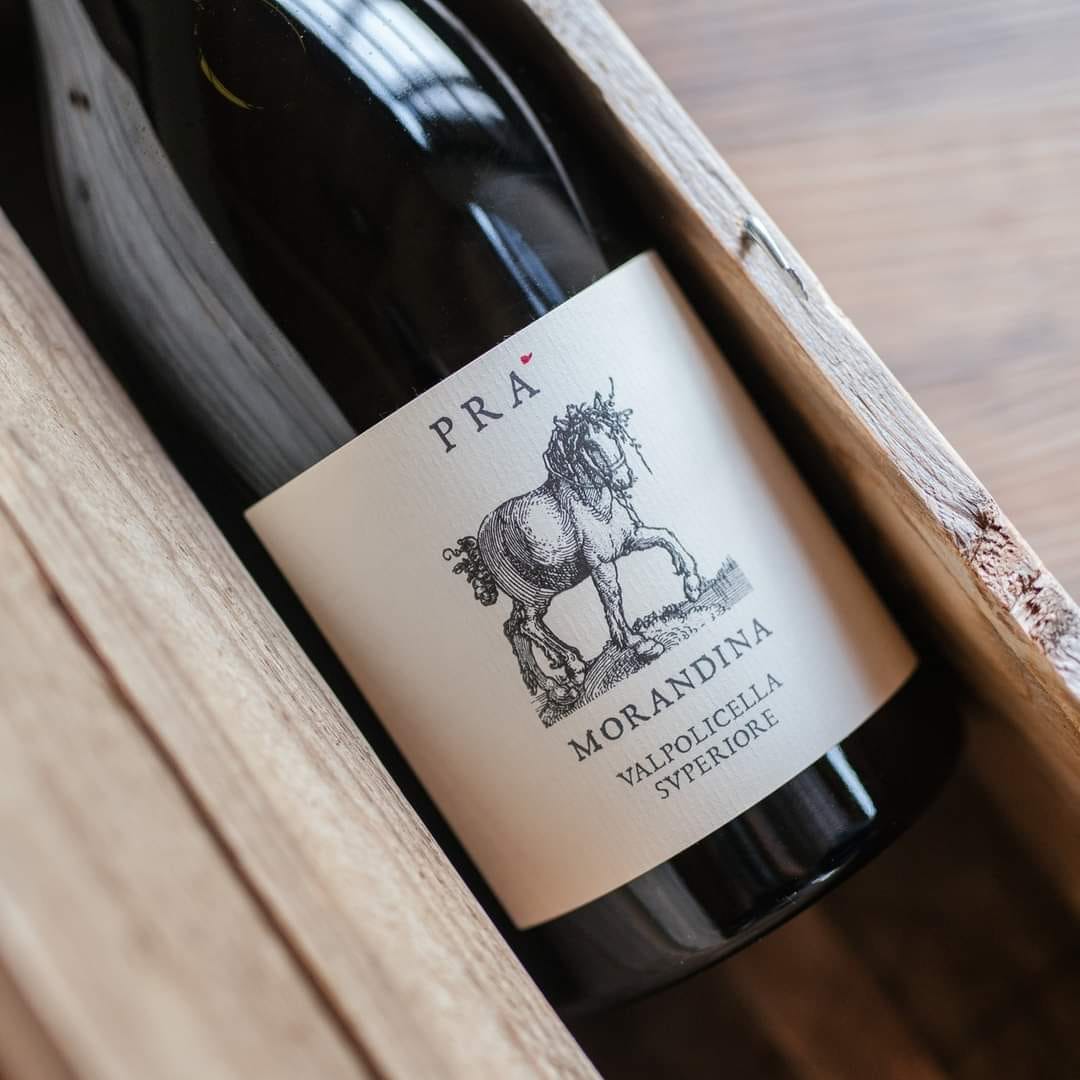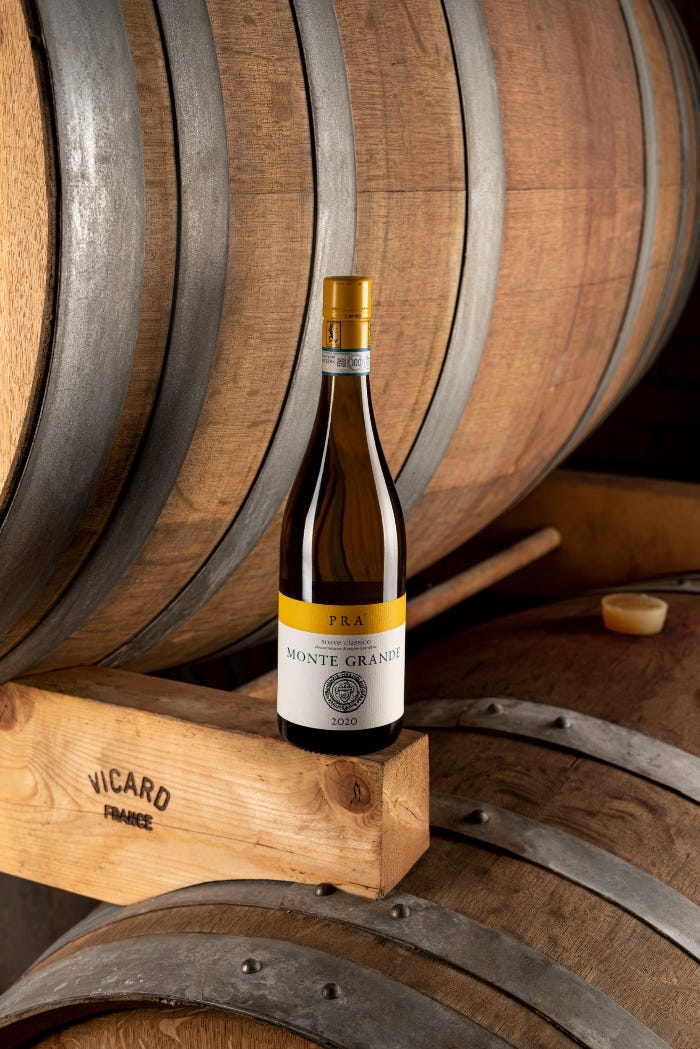How Graziano Prà Makes Wines With a Contemporary Twist in Veneto
When Valpolicella Superiore takes a front position...
Graziano Prà is an organic winery with vineyards in both Soave and Valpolicella in Veneto that looks toward the future. The owner Graziano Prà makes slim and elegant wines with longevity and great drinkability. He is one of five vintners – Gli Svitati – that have embraced and are promoting the use of screw caps on wine bottles. I had the pleasure of being invited to a press lunch, where we tasted a selection of their Soave and Valpolicella wines paired with the delicious food of Konnubio restaurant in Florence the other week.
Graziano Prà is an organic winery with vineyards in both Soave and Valpolicella in Veneto that looks toward the future. The owner Graziano Prà makes slim and elegant wines with longevity and great drinkability. He is one of five vintners – Gli Svitati – that have embraced and are promoting the use of screw caps on wine bottles. I had the pleasure of being invited to a press lunch, where we tasted a selection of their Soave and Valpolicella wines paired with the delicious food of Konnubio restaurant in Florence the other week.
Graziano Prà is a firm believer in leveraging the potential of the local territory and he considers himself a “guide” who cares for the land and the vineyards to steer it in the “right direction towards an elegant, precious wine.” He focuses on growing local native grapes such as Garganega and Trebbiano di Soave, Corvina, Corvinone, Rondinella, and Oseleta. The vineyard plots are on hillsides with volcanic soil in Soave and flaky calcareous soil in Valpolicella. Graziano Prà believes in promoting biodiversity and sustainable practices such as forest and beekeeping, recycling pallets and making them into wine boxes, and using solar panels.
Valpolicella Classico and Superiore, an Expression of the Valpolicella Terroir
Two of the wines we tasted during the lunch were Valpolicella Doc Morandina 2023 and Valpolicella Superiore Doc Morandina 2020. I enjoyed both wines very much for their terroir-driven directness and drinkability, I especially love how they have turned their Valpolicella Superiore wine into a sort of mini flagship wine.
Don’t get me wrong, I like a good Amarone too, and their Amarone della Valpolicella Docg Morandina 2017 has a lovely freshness and slimness, yet complexity, with notes of more mature red fruit, spices, tobacco, forest floor, and herbal notes. The wine showcases elegance rather than power. However, an Amarone may not be suitable for every day. In contrast, Valpolicella Classico and Superiore do not include the dried grape element, making them leaner, more linear, terroir-driven, and easier to drink.
The Valpolicella consortium launched a project in 2021 to better valorize the Valpolicella Classico and Superiore categories as wines that better than others give an expression to the local territory. The consortium emphasized that Amarone is a wine characterized by its unique production method and the appassimento process used for the grapes. Similarly, Ripasso and Recioto share this distinction. On the other hand, Valpolicella Classico and Superiore are wines “che si identifica simbioticamente con il territorio” (more closely in symbiosis with their territory). I hope this will increase consumers’ appreciation of Valpolicella Classico and Superiore wines!
Let’s not forget about Soave…
The hills and valleys of Soave, with their volcanic soil and basaltic substrate, are located between the provinces of Verona and Vicenza, just below the Lessini Mountains. The soil is more volcanic and fertile in the valleys, while on the hills, it is more calcareous. Graziano Prà’s philosophy is to make Soave wines that are fresh, clean, elegant, age-worthy, and gastronomic.
The highlight was to have the opportunity to taste their cru wine Monte Grande Soave Classico Doc 2017 (70% Garganega, 30% Trebbiano di Soave) both in the version with a cork closure and with a screw cap. The wine is aged for 10 months in large casks of Allier oak contributing to its structure and complexity. On the nose, the screw cap version was more immediately expressive while it took a bit more time for the cork version to open up. Its freshness, intricacy, smoothness, structure, a hint of petrol as it ages, and volcanic undertone make it a captivating wine to enjoy.
Have you had the opportunity to taste Graziano Prà’s wines? What are your thoughts about their Soave and Valpolicella wines?
Please read the whole article on my website HERE!
Hi, I'm Katarina, the PhD of (wine) history.
I help small and midsized wineries to gain visibility in an international context. I'm a wine writer, content strategist & consultant, small bespoke wine tours, wine judge, and translator.
👉 To learn more, book a call!







